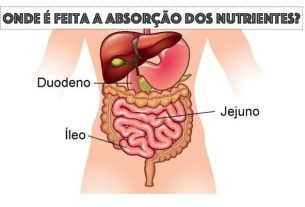The meat diet is based on the exclusive consumption of meat and other protein-rich sources, such as fish and poultry. In addition to proteins, these foods are also rich in fats, which in recent years have come to be seen as good fats, as they are naturally present in foods.
This diet originates from studies on people around the world, such as the Eskimos, for example, whose diet is based solely on meat, and who still have excellent health parameters and long life expectancy. Furthermore, historians believe that at the beginning of human evolution, the diet consisted only of hunted animals.

What to eat and what to avoid
In the meat diet, only meat of all types is allowed, such as beef, pork, lamb, chicken, turkey, duck and fish in general. The preparations can be roasted, grilled or cooked, and must be seasoned with aromatic herbs and vegetables, such as garlic, onion, tomato, green chilli, basil, pepper, olive oil, lard and coconut oil.
On the other hand, you should avoid all types of fruits and vegetables, pasta, sugar, grains such as rice, wheat, quinoa, corn, peas, beans, chickpeas, soy, and nuts such as chestnuts, walnuts and almonds. Furthermore, the meat diet also does not include processed meats such as sausages, sausages, ham and mortadella, as well as artificial fats such as margarine and hydrogenated fat.
Health risks
Exclusive consumption of meat can cause a deficiency of antioxidants, which are found mainly in vegetable sources, especially vegetables. However, there is no proof that people who live exclusively on meat and fish suffer from any health problems due to the lack of vegetables and fruits.
Another negative point is the lack of fiber in the diet, which can harm the functioning of the intestine and leave you with a greater tendency to constipation.
Another point to highlight is that there is no proof that this type of diet increases the risk of cardiovascular disease, but the general recommendation from health authorities is that the consumption of saturated fat, found mainly in meat, be moderate, and that a A balanced diet should be based on the consumption of vegetables and fruits.
How to adapt the meat diet today
To follow the meat diet, it is initially necessary to see a doctor and a nutritionist to carry out laboratory tests, check your health and receive guidance on changing your diet. It is important to try to consume organic meats and prepare them at home whenever possible, using natural seasonings and good fats, such as olive oil or coconut oil.
As meat is very satiating, it is not necessary to eat every meal of the day, and it is common to eat only 2 or 3 times a day. Whenever possible, it is interesting to add vegetables, leaves, nuts such as chestnuts and peanuts, and one or two fruits per day, as it adds more fiber, vitamins and minerals to the diet. See how to follow a low-carb diet, also known as low carb.

Sign up for our newsletter and stay up to date with exclusive news
that can transform your routine!
Warning: Undefined array key "title" in /home/storelat/public_html/wp-content/plugins/link-whisper-premium/templates/frontend/related-posts.php on line 12
Warning: Undefined array key "title_tag" in /home/storelat/public_html/wp-content/plugins/link-whisper-premium/templates/frontend/related-posts.php on line 13




